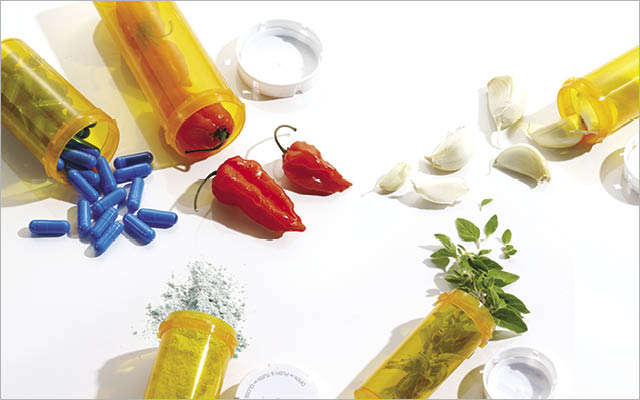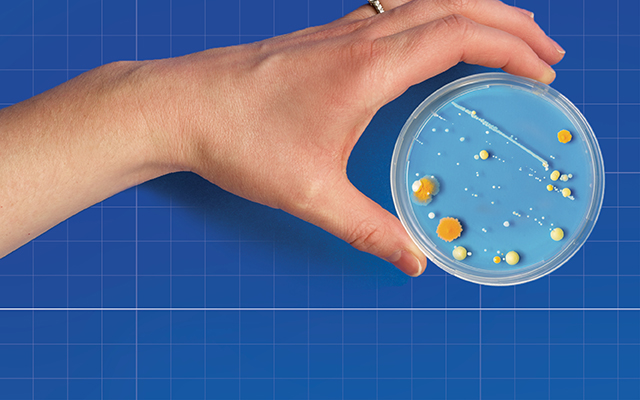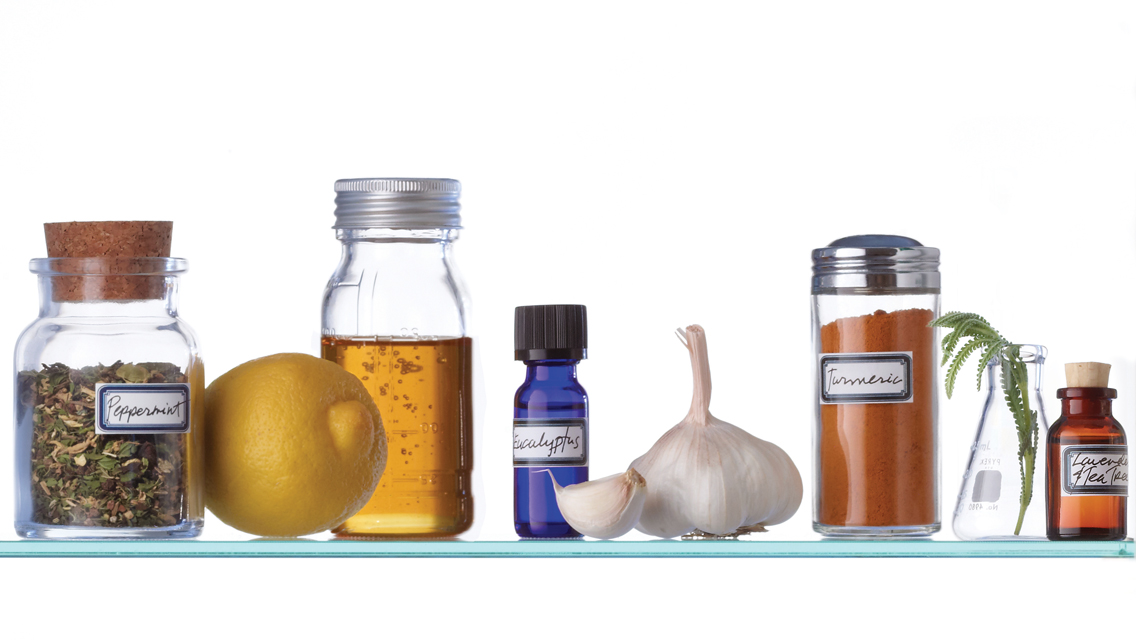When Meg Jones decided to undergo arthroscopic knee surgery for an old soccer injury, she figured she’d be back up and about in a week or so. It was a routine procedure, after all.
Instead, just days after the operation, she was rushed into a second, emergency surgery for hospital-acquired MRSA (methicillin-resistant Staphylococcus aureus), a type of staph bacteria. More infections followed, which eventually forced doctors to amputate her leg — a last-ditch effort to head off the potentially lethal contagions.
But even losing her leg didn’t rid her of the infection. Jones later lost her right arm below the elbow and has survived four bouts of sepsis, a life-threatening response to infection.
She has spent the past 15 years fighting MRSA-related infections with massive doses of antibiotics, and the bacteria may have become resistant to them. She’s now allergic to the drugs.
Despite all of this, Jones is grateful simply to be alive.
Not everyone is so lucky. Some 2 million Americans develop antibiotic-resistant infections each year, and 23,000 of them die as a result.
The U.S. Centers for Disease Control and Prevention calls antibiotic resistance an urgent threat and spends upward of $160 million annually to combat it. Because the condition results in longer hospital stays, where exposure to other antibiotic-resistant bacteria is substantial, the risk of further infections like MRSA increases.
The World Health Organization urges governments to regulate the use of antibiotics in agriculture, because overuse in animals can lead to drug resistance in humans. And in 2016 the United Nations declared antibiotic resistance a fundamental threat.
Yet even in this grim landscape, there are glimmers of hope. Public-health officials are mounting education campaigns to curtail the overuse of antibiotics. At the same time, scientists are seeking new ways to fight drug resistance and control infections. Using substances found in nature — clay, herbs, and rare plants — they’re discovering treatments that may help reduce our dependence on standard antibiotics.
Read on to learn about some of the more promising future antibiotic alternatives.
Fecal Transplants
An especially powerful solution to antibiotic resistance is already in use, though many still find the idea hard to swallow.
Hundreds of years ago in China, physicians began serving “yellow soup” or “golden syrup” containing human fecal matter to treat gastrointestinal issues. Today, many hospitals are using fecal microbiota transplants (FMT) — now administered in a more palatable form — to treat infections of Clostridium difficile (C. diff), an often-deadly resistant bacterium that causes severe diarrhea.
There’s also research suggesting fecal transplants may help treat a range of other health issues, such as obesity and autism spectrum disorder.
A fecal transplant introduces beneficial bacteria into the gut to fight the resistant bacteria; the procedure’s effect is sometimes almost instantaneous.
University of Minnesota professor of medicine Alexander Khoruts, MD, recalls the first FMT he administered, in 2008. The 64-year-old woman was not responding to antibiotics. She had lost 60 pounds because of recurrent C. diff infections, which forced her to wear diapers and use the bathroom every 15 minutes. Khoruts treated her by combining fecal matter from her healthy spouse with saline in a kitchen blender (carefully labeled) and introducing it via colonoscopy.
“Incredibly, while still in recovery, the patient said she felt something in her was becoming ‘whole’; she was feeling better,” he recounts. “After having diarrhea for 15 months, she had her first normal bowel movement two days after the treatment.”
That case inspired research that has led to hundreds of FMT procedures at the University of Minnesota alone, where the success rate is 90 to 99 percent.
FMT’s effects are often like flipping on a light switch, says gastroenterologist Alison Schneider, MD, who uses the treatment at the Cleveland Clinic of Florida. One of her patients had been in and out of the hospital with C. diff and other chronic complications for almost a year, unable to shake his symptoms without antibiotics. After the transplant, she says, he reported that he had more energy than before he was diagnosed.
The FMT success rate is so high that in 2013 the U.S. Food and Drug Administration waived the clinical-trial requirement for approving the procedure. It is still, however, considered an investigational drug, and patients must take a course of antibiotics before they can become FMT candidates.
There’s still a lot to learn, says Schneider, such as why certain people seem to be better donors and why the results vary for recipients.
Still, more widespread use of fecal transplants would offer further protection from resistance because the antibiotics presently used to target C. diff — which also kill healthy gut flora — would no longer be needed.
Beyond C. diff, researchers believe the procedure could improve other maladies with gastrointestinal connections, such as childhood autism. Many children diagnosed with the condition also have GI symptoms.
In a 2017 study, researchers found that FMT provided significant relief from abdominal pain, constipation, and diarrhea while improving behavioral symptoms by 20 to 25 percent in children with autism.
Healing Clay
When geochemist Lynda Williams, PhD, first learned about a green clay from Ivory Coast that appeared to heal ulcers, she was intrigued. Especially because no one seemed to understand why it worked.
While studying the mysterious healing clay at Arizona State’s School of Earth and Space Exploration, where she is a research professor, Williams and her team soon discovered it could also kill antibiotic-resistant bacteria. They now suspect that the iron, aluminum, and pH balance in the clay act together to achieve this effect.
The team later found a blue clay from Oregon that appears to kill almost every bacteria it encounters. Sensing a potential medical application, Williams and microbiologist Robin Patel, MD, director of the Mayo Clinic’s Infectious Diseases Research Laboratory, sought to determine whether Oregon blue clay might have an impact on a persistently tricky type of infection that comes from biofilms.
Biofilms are bacterial communities that form on surfaces as coatings; they’re tough to eliminate with antibiotics. They appear in some two-thirds of human infections, and sufferers often try every antibiotic under the sun to clear them, further fueling the fire of antibiotic resistance, Patel says.
Biofilms are often present on wounds, and this is where the team focused its investigation. “If one were ever going to use clay in humans, an obvious application would be to wounds,” explains Patel.
They tested a clay suspension against 13 bacteria commonly found in nonhealing wounds, including multidrug-resistant organisms such as MRSA and carbapenem-resistant Enterobacteriaceae. The clay was active against 11 of the 13 bacteria, even in their biofilm state.
Because the clay contains both aluminum and iron, it has two antibacterial weapons, Williams notes. This may make it more difficult for bacteria to develop a resistance; it would require “learning” to tackle two elements instead of one.
“But bacteria are amazing,” she warns, “and we can’t predict what will happen.”
Most clays, however, contain common contaminants, such as mercury, lead, and arsenic, so Williams and other researchers remain leery of them. The clays might serve as a short-term alternative to antibiotics, but aren’t sufficient for battling longer-lasting infections, she says.
Meanwhile, some scientists are testing antibacterial clay for agriculture, placing it in soil to treat apple blight as well as infections in citrus fruits.
Health Benefits of Chili Peppers
For thousands of years, people have added chili peppers to their food — and not only for the flavorful spice. Cooks of yore knew that food mixed with piquant peppers lasts longer. Chilies also contain potent anti-inflammatory agents, which make them a natural remedy for treating arthritis and other pain.
Researchers at the University of Minnesota are now studying what may be the chili pepper’s secret weapon — capsaicin, the substance that gives peppers their heat as well as their antimicrobial properties. Scientists speculate that capsaicin protects the chili plants from bacterial enemies in the wild, a capacity that might be harnessed for human health.
If the ingredient can be synthesized at high concentrations, it could replace artificial preservatives, says David Baumler, PhD, an assistant professor in the university’s Department of Food Science and Nutrition. It could also be a useful treatment for food poisoning.
Baumler recently planted 500 pepper varieties on the university campus, part of his mission to find the most antibacterial variety. His forthcoming study shows the ghost pepper, also known as the bhut jolokia, may be it.
His team tested 29 peppers against four common bacteria that cause food poisoning — Salmonella, E. coli, Listeria, and Staphylococcus — and a fungus. They found that most of the peppers demonstrated some antimicrobial activity, but the ghost pepper scored highest.
Antimicrobial Himalayan Plants
Every rainy season, Kamal Dev, PhD, a professor at India’s Shoolini University of Biotechnology and Management Sciences, takes his students into the Himalayas to collect plants. They’re seeking flora that grow exclusively in cold desert climates, such as Vitex negundo, commonly known as Chinese chaste tree, and Colebrookea oppositifolia, sometimes called Indian squirrel tail.
For centuries, people have used these plants to cure various ailments, including asthma and skin diseases. “They’re unique plants, and they’re important in terms of ancient medicines, but they hadn’t been explored for current research,” he says.
Dev has found that many of these plants have antimicrobial properties that are “better at killing bacteria than some of the antibiotics being used today,” he says. And critically, they work on more than one bacteria. “There aren’t many antibiotics that have multiple targets.”
His team also learned that the compounds can be combined with a low dose of a conventional antibiotic to knock out an infection. In some cases, they were able to reduce the typical antibiotic dose by more than half.
As with other plant-based formulas, however, producing the compounds to scale is challenging. Traditionally, the plants were ground to a paste or boiled, and the beneficial compounds were presumably extracted into the water.
Creating drugs based on these plants remains in the experimental stage, yet Dev’s hopes are high. “Because they’ve been in nature for a long time and bacteria haven’t developed resistance to them yet, I’m sure that they will be safe,” he says. “The bacteria in the soil have not developed resistance.”
Looking Ahead
Whether or not chili peppers or blue clay survive clinical trials, these researchers are confident that the future will reveal real solutions to antibiotic resistance.
“As opposed to just saying it’s a hopeless situation, I think we can look at what’s going on with biofilms [and other antibiotic resistance] and ask, ‘How do we interrupt it?’” Patel says. “I’m optimistic that we can get to a solution. It may not just be one thing; it could be different for biofilms and wounds and hip implants.”
Dev agrees. “In every corner of the world, people are looking for what’s next.”
Even Meg Jones, despite her 15-year struggle with infection and antibiotic resistance, is optimistic.
“My hope is that science improves to the point that we are able to treat the untreatable superbugs — and better treat the ones that we do have some antibiotics for,” she says. “I don’t want anyone to go through what I’ve gone through and what others I know have gone through with infection.
“Infection is a thief. It steals your ability to function. It steals time. It can and does steal limbs. It steals lives.”
Found in Nature
Many antibiotic alternatives are still in the research stage, but several items currently on the market can improve our antibiotic stewardship. The following products “are benign and simple, and they don’t interact with current antibiotics, so you can even combine them when you do have to take a prescription antibiotic and then the bugs get hit twice,” says Minneapolis-based functional-medicine physician Kara Parker, MD. Because many of these feature a variety of antimicrobial properties, they’re typically too complex for bacteria to outsmart.
Garlic
Ancient Olympians consumed garlic before competitions to boost stamina. In China and India, the bulbs were used to treat leprosy and parasitic infections. In medieval times, people used garlic to cure everything from toothaches to snake bites.
Today, scientists credit garlic’s sulphur compounds for its many health-promoting qualities and are intrigued by its antimicrobial promise: A 2011 study, for example, found garlic could suppress a common foodborne pathogen.
In 2018, Johns Hopkins researchers learned that garlic oil can kill one of the most pervasive and elusive bacteria of our age: Borrelia burgdorferi, which causes Lyme disease. A year earlier, the same team had found that oregano oil worked better against the bacteria than the antibiotic daptomycin, but the garlic oil bested all of its predecessors, killing the Lyme bacteria in seven days.
Although it’s too early to declare garlic’s victory over Lyme, Parker says there’s no harm in deploying it — along with a prescription antibiotic, if necessary. And functional physician Terry Wahls, MD, suggests that garlic’s broad-spectrum health effects are so powerful that two cloves deliver as many phytonutrients as one full cup of any other vegetable. Enjoy liberally.
Oregano Oil
It takes a thousand pounds of oregano plants to produce 1 ounce of oil, and that ounce packs a serious antimicrobial, antiviral punch. One study showed the oil could combat 41 different strains of Listeria. Another found that it may even provide protection against MRSA (methicillin-resistant Staphylococcus aureus).
Oregano oil may play another important role in combating antibiotic resistance: Some livestock farmers have replaced antibiotics in feed with the oil to help ward off disease in their chickens and pigs.
The antimicrobial properties in oregano oil come from a compound called carvacrol. Tincture or capsules (with at least 80 percent carvacrol) appear to be the most effective means for combating infection. If you use the tincture, try taking four drops in a carrier oil, such as olive oil, to ward off colds or other infections.
Colloidal Silver
Doctors can be quick to dispense oral antibiotics for ailments that could be treated with a topical solution. That’s where colloidal silver (made from pulverized silver, sometimes suspended in liquid) can shine. Its antimicrobial ability is well-established, though the mechanisms remain a mystery. Researchers suspect that it damages the cell membranes of bacteria by grabbing onto proteins in the cell walls.
Systemic antibiotics can be overkill for minor nasal conditions, Parker says, but spritzing colloidal silver into the nose can relieve a mild sinus infection. A few drops can also help resolve ear and skin infections, as well as cuts and burns. Ingesting it carries some risks, so stick with topical applications.
The average healthy person, Parker stresses, rarely needs general antibiotics. If products such as colloidal silver can relieve minor ailments, we may eventually reach a point where we turn to antibiotics only when we truly need them.
This originally appeared as “Alternative Antibiotics” in the June 2019 print issue of Experience Life.




This Post Has 0 Comments